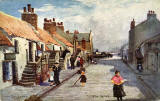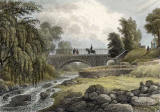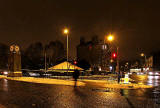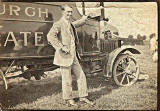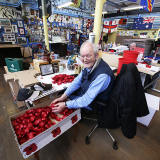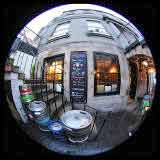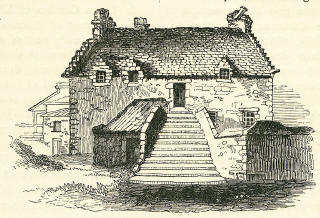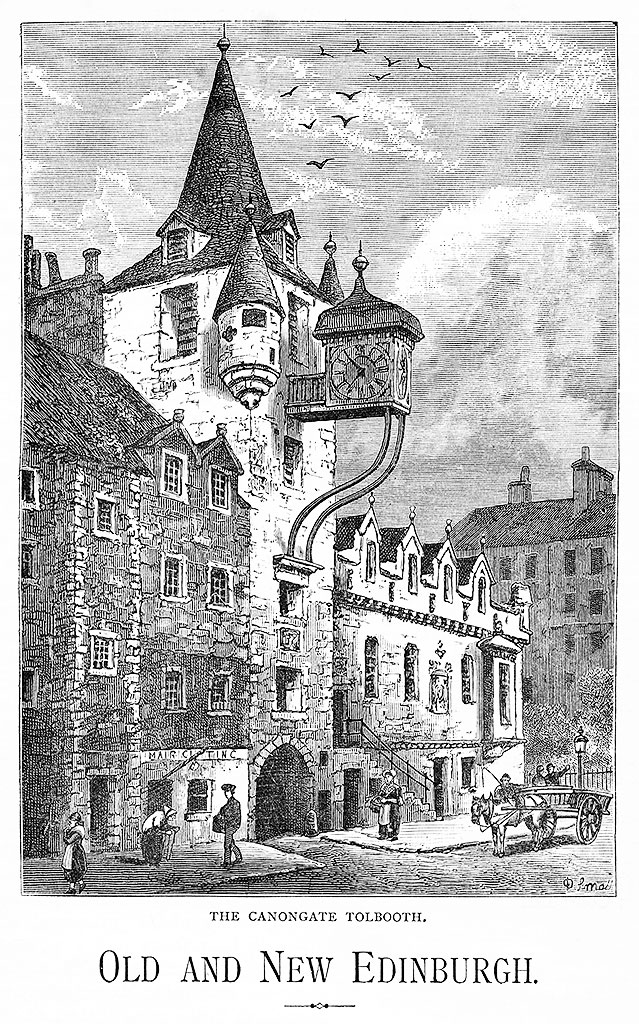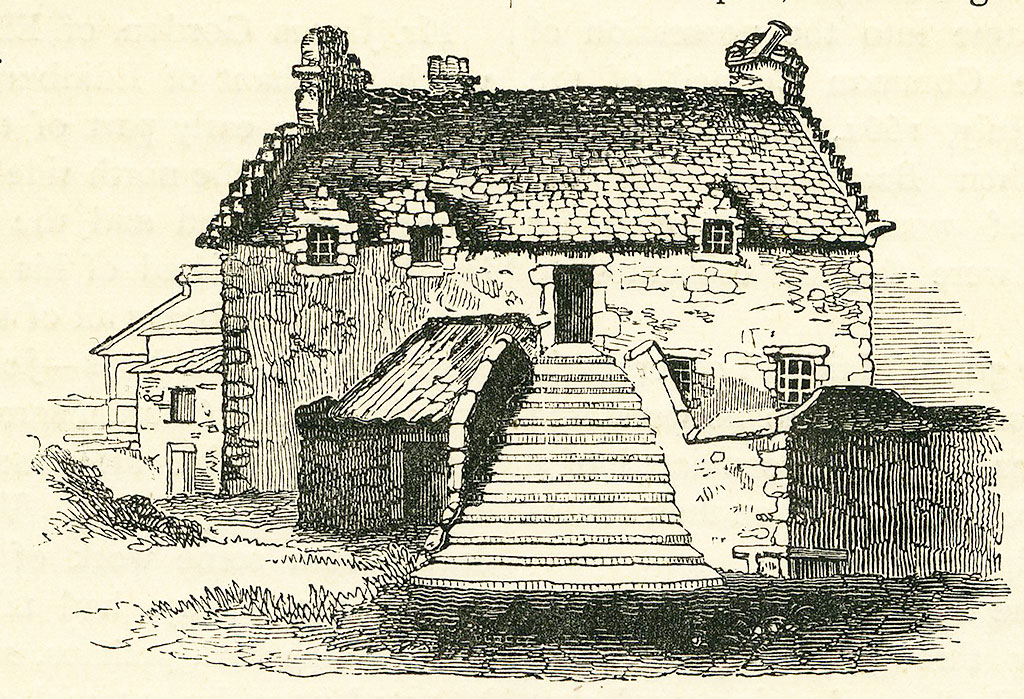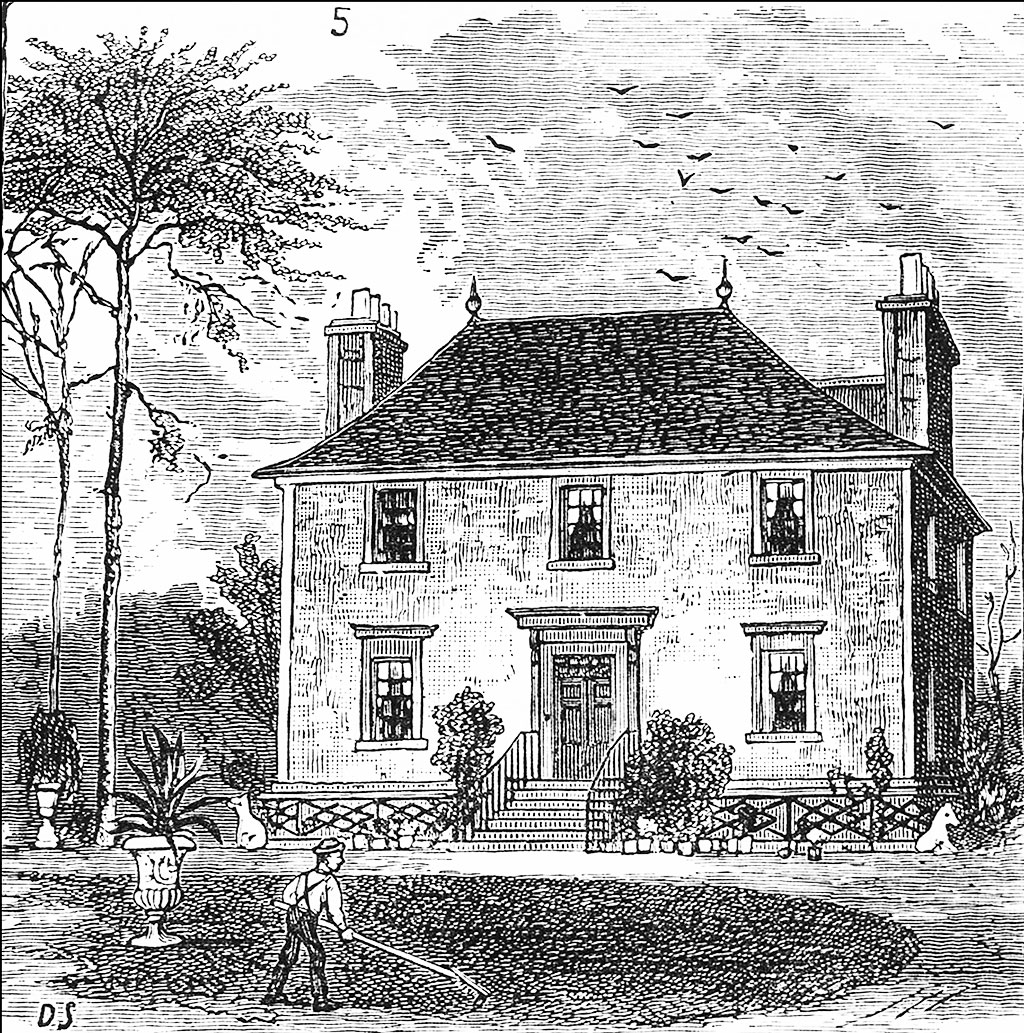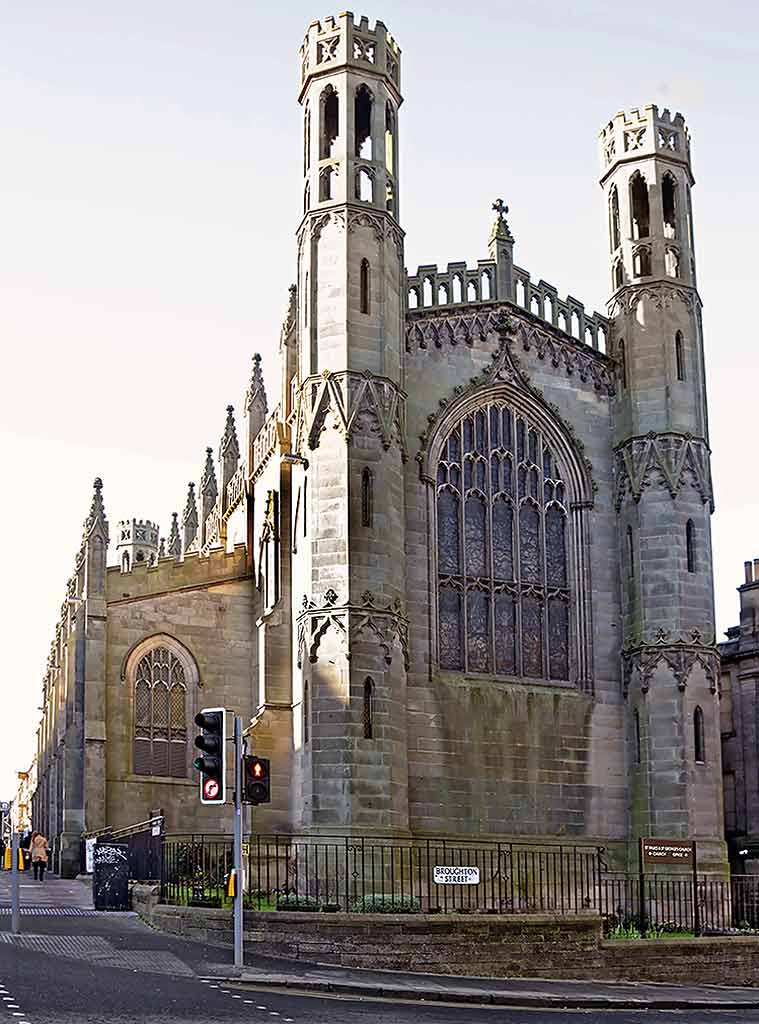|
Talk to Broughton History Society - Monday 9 February 2015 Introduction |
|||||
|
1 |
2 |
3 |
4 |
5 |
6 |
|
7 |
8 |
9 |
10 |
11 |
12 |
|
|
Early History Other Sources Several publications refer fairly briefly to the history of Broughton, mentioning the same subjects as are covered in Cassel's 'Old & New Edinburgh': - King David's Charter to the Abbey of Holyrood of 1128 and its reference to Bruchtoun. - Land ownership: Church, State, Heriots' Hospital, individuals. - Witches' trials. There is a large plaque on the outside wall of the 'Barony' bar at 85 Broughton Street. It refers to the witches of Broughton, and to a thatched cottage named the 'Witches Houf' that once stood where Broughton Street was built. Plaque on the wall of the Barony Bar at 85 Broughton Street © Peter Stubbs peter.stubbs@edinphoto.org.uk Photo taken January 14, 2015 'History of the Barony of Broughton' The book, 'History of the Barony of Broughton' by John MacKay was published in 1869, then republished in a limited edition of 500 copies by Broughton Books, Edinburgh in 1979. (Edinburgh Central Library has a copy of it in their Scottish Library.) I would not describe most of the book as a 'light read', but it does include a helpful introductory chaper, and more detail than I have read elsewhere. Here are a few brief extracts from the book: - "The village of Broughton was likewise the arena where many unfortunate persons were convicted and burnt for practicing what was then termed the crime of Witchcraft." - "This ancient barony has undergone many changes. What was once an independent burgh, with a civil and criminal jurisdiction of its own, and having its court of justice and tolbooth, ..." - "The earliest notice of Bruchtoun which we find on record is in the grant by King David the First of Scotland, in the year 1828, to the Abbey of Holyrood ..." - "It (Bruchtoun) appears to have belonged to the church until the Reformation, when it was vested in the state." - "The territories of the Barony and Burgh of Regality of Broughton were somewhat extensive ... " (These included 'lands callit Pleasance', parts of Leith, Liberton and elsewhere.) 1852 This engraving which appears in both 'Old & New Edinburgh' and 'History of the Barony of Broughton' is dated 1852. It can be compared with this 1852 Ordnance Survey large-scale map of Old Broughton. The link above is to a page on the National Library of Scotland web site in which it is possible to zoom-in and expand the map on the screen. Broughton Village - 1852 from a drawing by James W Simson © For permission to reproduce, please contact peter.stubbs@edinphoto.org.uk The 1852 Ordnance Survey large-scale map includes a lot of detail for Old Broughton: - NW corner: Foundry with Crane, Punding Machine, Weighing Machines, Boiler and Cess Pool - NW corner: Timber Yard with Crane and Well - W side: Summer House, Seat, Cistern, Trough - SW corner: Timber yards, Smithy and Broughton Market (Flesh, Fish, Poultry, &c.) - Centre: Paterson's Court, Lapidary Works, Smithy, Tanks - E side: Timber Yards, Water Plugs, Glassite Chapel (seats for 700) - W end of Barony Street: St Mary's Free Church and School (seats for 800)
Edinburgh Castle The Edinburgh Evening News "Here's Your Answer" column, in 1989, referred to two occasions when shots were fired in the direction of Broughton from the cannons at Edinburgh Castle: - In the days of Regent Morton, Broughton was the scene of many encounters between the Queen's men and the followers of the King. They took delight in annoying the garrison up at the castle. They did this by riding around in the fields in range of the castle's guns with handkerchiefs tied to the points of their swords. In 1571, members of one of these groups, led by the second Lord Methven were "a little too forward in their unreasonable bravery", and were hit by a cannon fired from the castle. - In 1715, a party of Highlanders marching through Broughton when they were "cannonaded" from the castle with a 6 pound shot that went through a nearby barn.
|
|
Since 1800 Housing Edinburgh New Town expanded to the east in the early 19th century, to include much of Broughton. A regular pattern of streets and houses covered most of the land to the west of Broughton Street, apart from Broughton Market, built on a diagonal plot at the west end of Barony Street in the 1840s for the sale of fish, meat and vegetables. In recent years, the market has had several uses, including operating as a garage. It is now is being used as a store for the City of Edinburgh Museums. I believe that part of the market is also being used by Edinburgh's traffic wardens when they are not walking the streets. The last of the houses in the old Broughton Village at the west end of Barony Street survived until 1936 [Broughton's Story: Broughton History Society Exhibition, Broughton St Mary's Church, Edinburgh: 7-19 August, 2006] Churches St Paul's & St George's Church at the corner of York Place and Broughton Street was built 1816-18. St Paul's & St George's Church
Other churches in Broughton were built during the early-19th century, including: - Albany Street Chapel, 1816 - St Mary's, Bellevue Crescent, 1824 - Catholic Apostolic Church, 1843-44 Other churches in Broughton were built during the early-19th century, including: |
End of Page 6
|
Talk to Broughton History Society - Monday 9 February 2015 Introduction |
|||||
|
1 |
2 |
3 |
4 |
5 |
6 |
|
7 |
8 |
9 |
10 |
11 |
12 |
